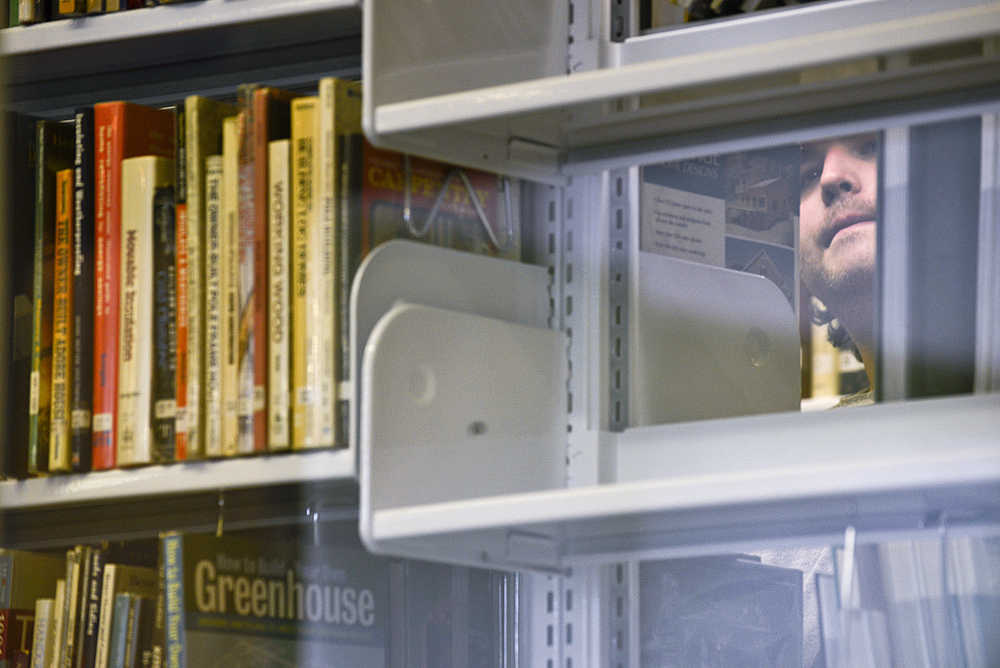Editor’s note: This story has been changed to correct the name of the Kenai Community Library, incorrectly given as the Kenai Public Library.
The number of books and other materials accessible to Kenai Community Library patrons will increase from thousands to millions when the library joins the state-wide Joint Catalog consortium this spring.
The Joint Catalog is an effort led by the University of Alaska Anchorage to combine the catalogs of several Alaskan libraries in order to increase the material available to each while dividing maintenance costs. The consortium currently consists of 65 public, academic, school, and special-subject libraries.
The Kenai Community Library plans to become a consortium member in June of this year. The approximately 70,000 titles in its catalog will join the 1.6 million titles in the Joint Catalog, held by members including the Anchorage state and public libraries, University of Alaska libraries, the Alaska State Historical library, and public libraries in Palmer, Wasilla, and Valdez.
“When you search our catalog in the future… you can search just the holdings of the Kenai Library, if that’s all you’re interested in finding — something that’s here, on site — or you can search the entire consortium,” Mary Jo Joiner, Kenai Library director, said. “If you see a book that’s in (for example) Palmer, Valdez, or the University of Alaska in Anchorage, that you’re interested in, you can put a hold on it directly.”
The requested book will later arrive by mail at the Kenai library.
Kenai currently participates in an interlibrary loan program that also allows patrons access to material from other libraries. Unlike the joint catalog arrangement, an interlibrary loan requires the user to fill out a form to be processed by a librarian, who locates the requested book and arranges for delivery. Joiner said that although the inter-library loan program will still exist, the Joint Catalog will offer a faster alternative by simplifying the search and eliminating the librarian from the process.
Kenai will join the joint catalog at a cost of $30,190, funded with a $5,000 grant from the federal Institute of Museum and Library Services, and a grant from the Rasmuson Foundation covering the remainder. The Kenai city council will vote on whether to appropriate the $5000 grant at their next meeting on April 15. Joiner wrote in an email that the total cost of the project including staff hours, maintenance, and supplies for shipping books is estimated at $48,890.
The joint catalog links not only the collections of member libraries, but software as well. Data storage, search, and check-in and check-out functions currently handled by the Kenai library’s computer system will be done through a server at the University of Alaska in Anchorage.
“One of the things they have to do is regularize how we all use this system,” Joiner said. “So far every library that they’ve brought in has been using the same software, which is provided by (software developer) SirsiDynix. But even so, we use them in different ways.”
In preparation for the data transfer, Kenai librarians are working with joint catalog staff in Juneau to change small differences between their catalog and the others in the joint catalog server. Joiner gave as an example the ways that libraries designate item types.
“Some libraries put down ‘b.’ Other libraries write out the whole word ‘book,’” Joiner said. “So they’re trying to get everybody to use the same thing.”
The $30,190 cost is being charged by SirsiDynix to transfer Kenai’s data to the joint catalog. The Kenai library currently pays SirsiDynix an annual maintenance fee, for which the Kenai city council budgeted $10,500 this fiscal year. Joiner said the maintenance cost of the joint catalog is less than the total fees its member libraries would individually pay SirsiDynix for separate catalog systems, and that Kenai’s share of this fee is expected to be approximately $5000.
To simplify the technical difficulties of the project, the joint catalog consortium is currently only open to libraries that use SirsiDynix software. This excludes some public libraries in the state, such as Soldotna’s, which uses a program called Apollo. Soldotna assistant city librarian Katja Wolfe said that her library has looked into joining the joint catalog when it opens to non-SirsiDynix users.
“It’s a really long-term project,” Wolfe said.
Reach Ben Boettger at ben.boettger@peninsulaclarion.com

